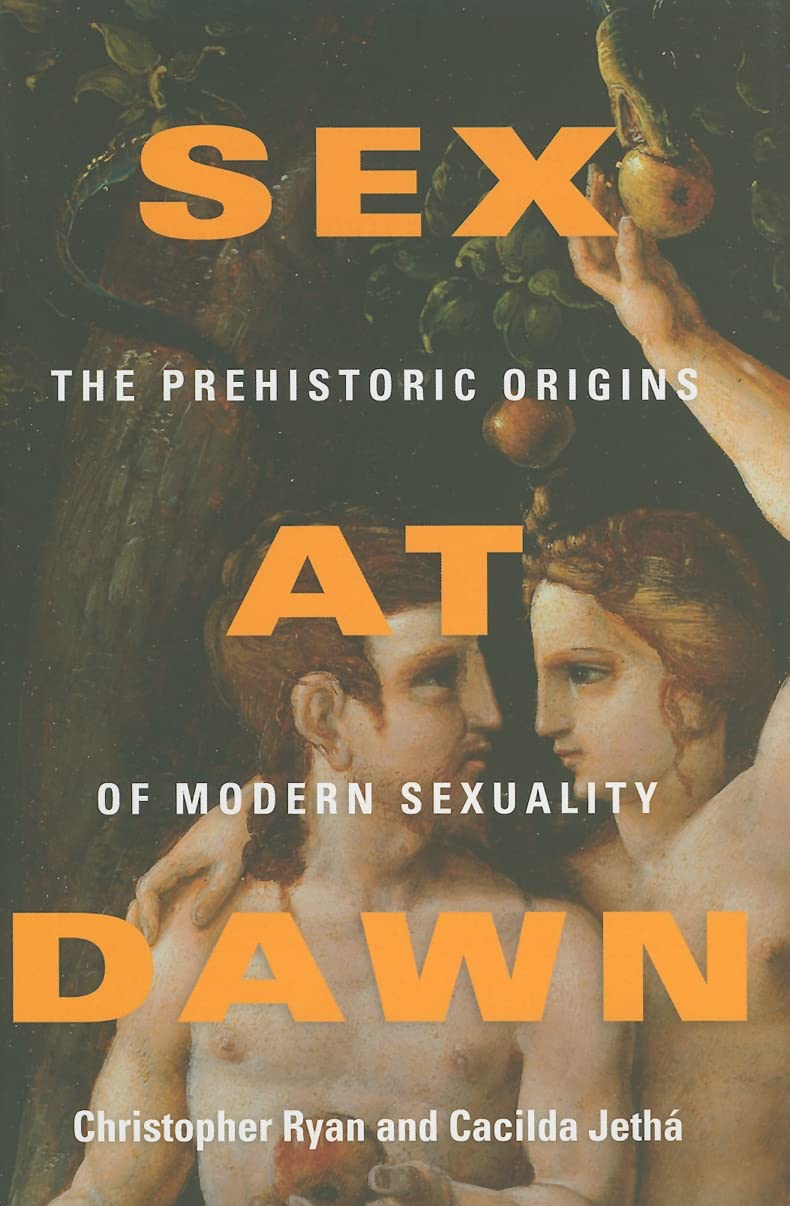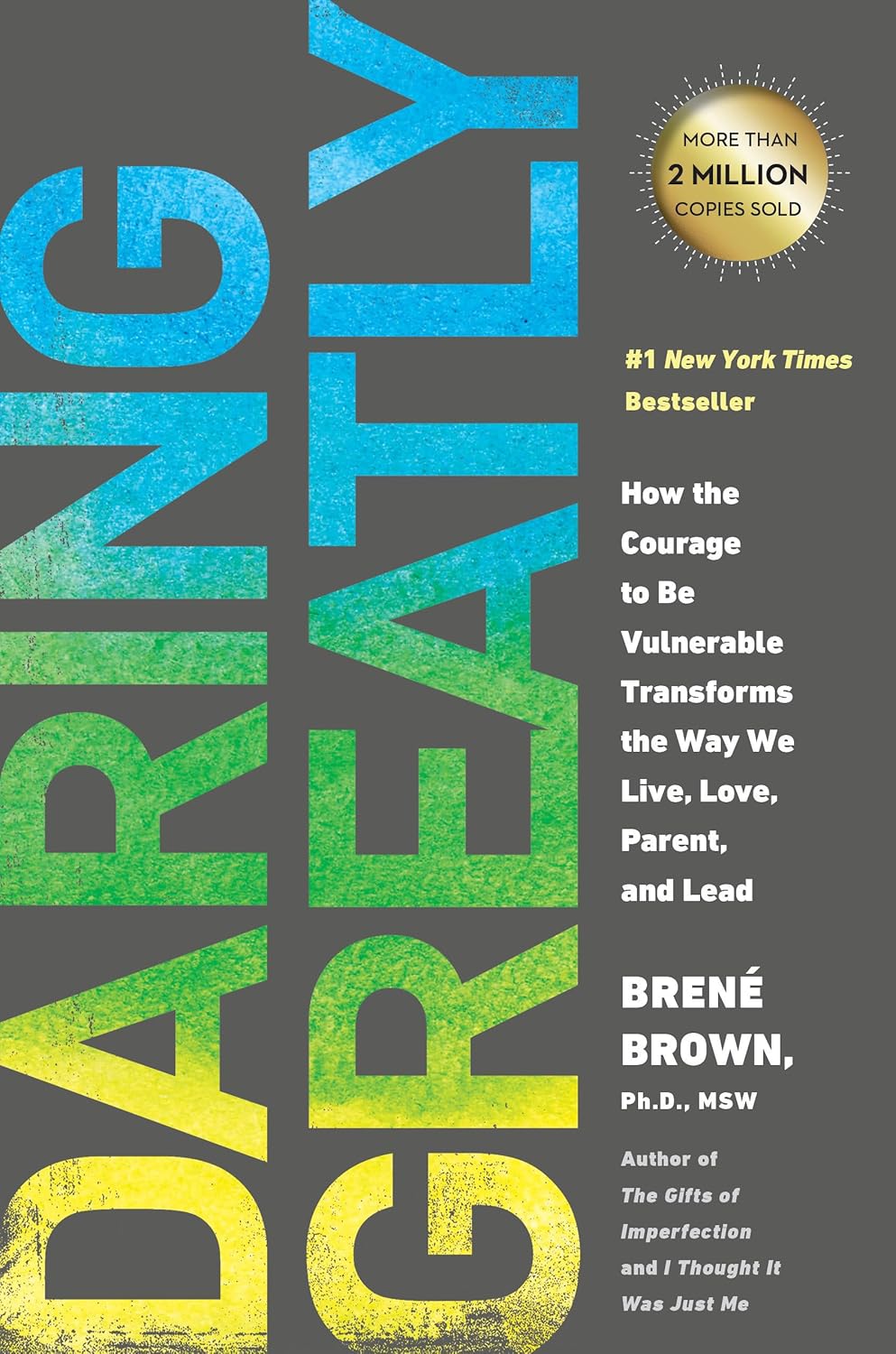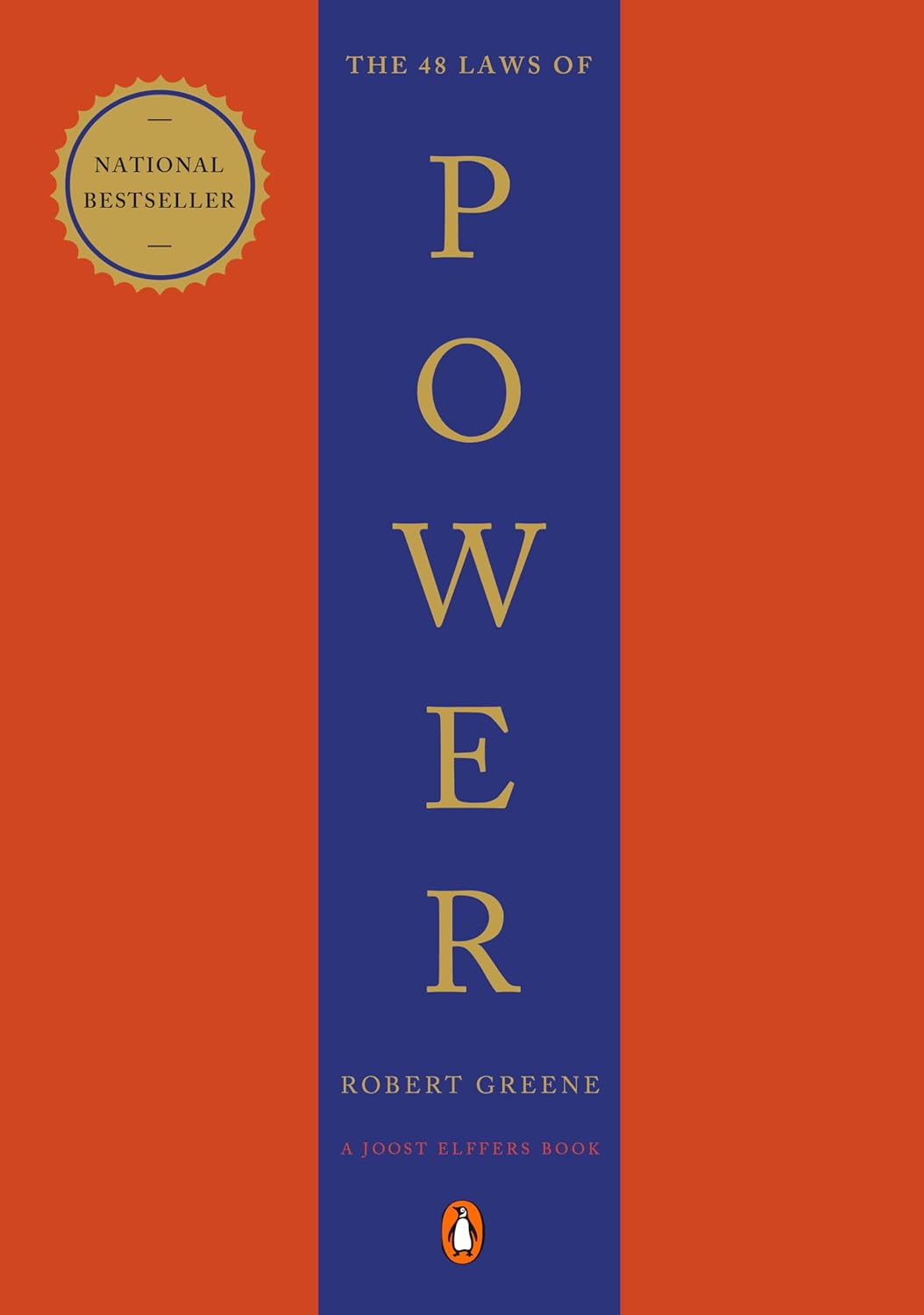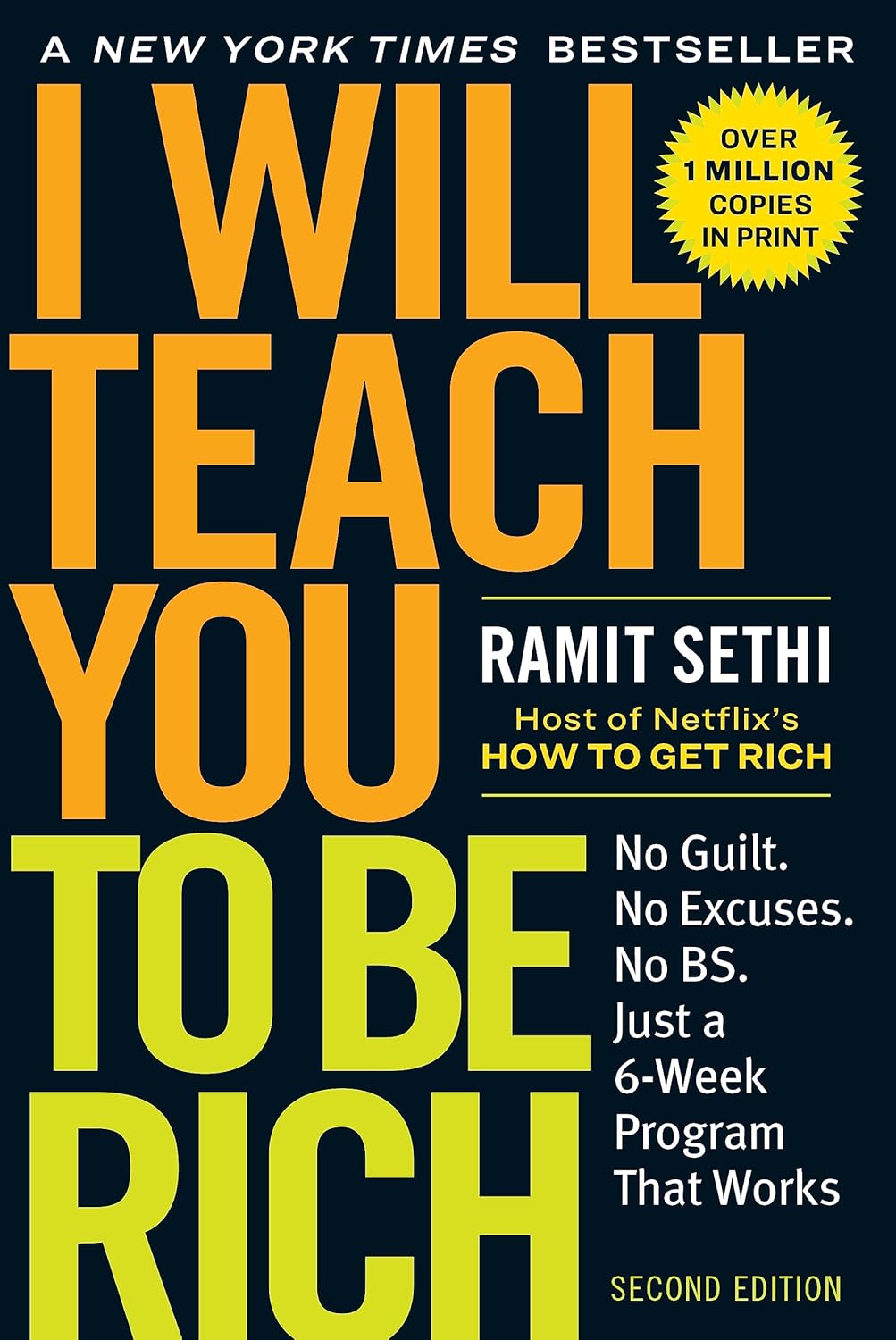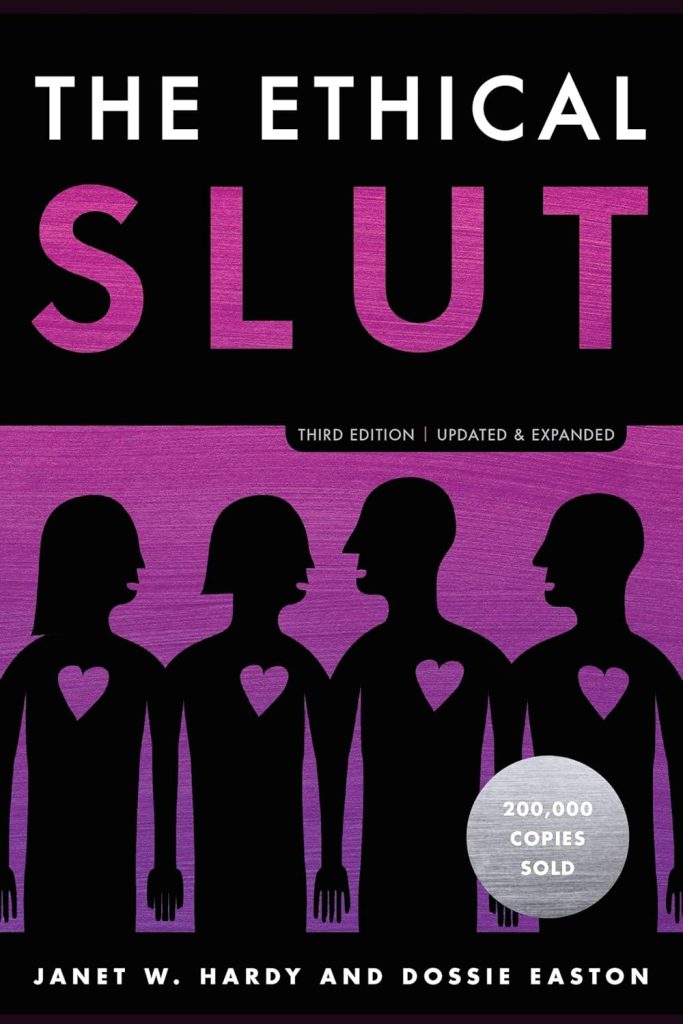
Buy The Book
Chapter
- Part I: Within ourselves
- ✦ Who Is An Ethical Slut?
- ✦ Values and Ethics
- ✦ Paradigms, Old and New
- ✦ The Language in This Book
- ✦ Ancestors & Antecedents
- ✦ Slut Skills
- ✦ Slutstyles
- Part II: between one another
- ✦ Boundaries
- ✦ Slut Economies
- ✦ Jealousy
- ✦ Sluts in Love
- ✦ Conflict
- ✦ Agreements
- Part III: in the world
- ✦ A Slut’s-Eye View
- ✦ Health
- ✦ Childrearing
- Part IV: having fun
- ✦ Finding Partners
- ✦ Group Sex, Public Sex, Orgies
- ✦ Conclusion: A Slut Utopia
The Ethical Slut, Third Edition: A Practical Guide to Polyamory, Open Relationships, and Other Freedoms in Sex and Love
About
*The Ethical Slut*, authored by Dossie Easton and Janet W. Hardy, is a seminal guide to non-monogamous relationships, first published in 1997. The book reclaims the term “slut,” defining it as someone who embraces sexual freedom and pleasure without shame, while advocating for ethical practices in relationships. It emphasizes the importance of consent, communication, and emotional honesty among partners.
The authors explore various aspects of non-monogamy, including managing jealousy, establishing boundaries, and navigating the complexities of multiple relationships. The book is structured into four sections, each providing practical exercises to help readers understand and apply its concepts.
Dossie Easton is a psychotherapist and sex educator with extensive experience in alternative sexualities, while Janet W. Hardy is a writer and publisher who has focused on promoting sexual diversity. Together, they have created a resource that challenges traditional relationship norms and encourages readers to explore their desires authentically and ethically.

Spark
Learn
Review
Part I: Within ourselves
✦ Who Is An Ethical Slut?
Ethical sluts embrace sexual freedom with integrity, rejecting societal shame around desire. We redefine “slut” as someone who celebrates consensual connections, whether with one partner or many, fostering joy and curiosity through shared pleasure. Our sexuality isn’t about pathology or immorality—it’s about building bonds rooted in honesty and respect, not possession.
By owning our choices, we challenge monogamy-centric norms and create communities where love grows through generosity, not scarcity. Ethical sluts prioritize self-awareness and empathy, recognizing that security comes from within, not from exclusivity. We value adventure, complexity, and the exploration of diverse desires, whether through flirtation, friendship, or physical intimacy.
Dossie’s journey—from escaping an abusive marriage to embracing communal living in 1960s San Francisco—exemplifies reclaiming autonomy. Ethical sluts thrive in networks of mutual support, where relationships are fluid and boundaries are negotiated with care. The goal is not rebellion for its own sake but creating a life where pleasure and connection coexist ethically.
✦ Values and Ethics
Sexual pleasure is a vital, life-affirming force. Ethical sluts reject Puritanical guilt, prioritizing consent, empathy, and self-awareness. Our ethics focus on minimizing harm and maximizing joy, not rigid rules. Honesty—with ourselves and others—is nonnegotiable.
Jealousy is reframed as a learned response to unlearn, not an inevitability. We reject the idea that sex needs justification—it’s inherently valuable. Ethics demand accountability: owning emotions, respecting boundaries, and nurturing trust through actions.
Dossie’s thesis, “Sex Is Nice and Pleasure Is Good for You,” challenges sex-negativity, advocating for self-acceptance and healing through joyful intimacy. Consent is redefined as active collaboration, not mere permission. By embracing radical honesty and emotional transparency, ethical sluts build relationships grounded in mutual growth rather than fear or obligation.
✦ Paradigms, Old and New
The prevailing cultural narratives often cast those who embrace sexual exploration as “sluts,” laden with negative connotations. These judgments contribute to a pervasive sense of shame among individuals who deviate from traditional norms. The term “promiscuous” implies that having multiple partners is inherently wrong, yet it fails to recognize that ethical behavior is defined by the respect and care shown to all partners, rather than the quantity of sexual encounters.
Moreover, the notion that sluts are amoral or evil perpetuates harmful stereotypes, suggesting they seek to manipulate or harm others. This chapter dismantles these myths, asserting that consensual relationships are rooted in mutual enjoyment rather than exploitation. The authors challenge the idea that sexual desire is sinful or destructive, arguing instead that it can be a source of joy and fulfillment when approached ethically.
Additionally, the historical pathologization of sexual exploration—particularly among women—has created a stigma around those who choose non-monogamous lifestyles. The authors encourage readers to question these societal constructs and recognize that love and intimacy can exist outside traditional monogamous frameworks. By embracing an abundance mindset regarding love and connection, individuals can liberate themselves from restrictive paradigms and redefine their relationships on their own terms.
✦ The Language in This Book
Language plays a crucial role in shaping perceptions of sexuality, often carrying inherent biases that reflect societal norms. This chapter emphasizes the need for a sex-positive vocabulary that accurately represents diverse sexual experiences without judgment. The authors advocate for reclaiming terms like “slut” and “polyamory,” arguing against language that reinforces monogamy as the default relationship model.
By redefining key terms, such as using “open relationships” instead of “nonmonogamy,” the authors seek to create an inclusive dialogue around sexuality. They highlight how traditional language often perpetuates stigma and misunderstanding, making it difficult for individuals to express their desires authentically. This chapter encourages readers to adopt inclusive language that respects individual identities and experiences, thereby fostering open communication about sexuality.
Furthermore, the authors discuss the importance of evolving terminology to honor diverse relationship structures and dynamics. By challenging conventional definitions of fidelity and commitment, ethical sluts can reframe their relationships as dynamic and fluid rather than static or constrained by societal expectations. Ultimately, this chapter underscores how language can empower individuals to articulate their desires and navigate their sexual lives with confidence.
✦ Ancestors & Antecedents
Exploring the rich history of sexual subcultures reveals valuable lessons for contemporary ethical sluts. This chapter highlights various communities—such as queer groups, swingers, sex workers, and spiritual practitioners—that have long embraced alternative relationship structures while challenging societal norms. By examining these ancestral practices, readers gain insight into how diverse expressions of love and intimacy have existed throughout history without causing harm or chaos.
The authors emphasize that learning from these communities can empower individuals navigating their own sexual journeys today. Dossie recalls her experiences at venues like the Omni club in San Francisco—a haven for diverse sexual expressions—where respect and safety flourished among patrons of all identities. The chapter underscores how marginalized communities have historically fostered environments conducive to exploring sexuality without fear of judgment.
By honoring pioneers from various backgrounds—whether through communal living arrangements or polyfidelitous networks—ethical sluts can reclaim resilience and creativity in their own lives. This exploration serves as both an acknowledgment of past struggles and a celebration of progress toward greater acceptance of sexual diversity today.
✦ Slut Skills
To thrive as ethical sluts requires developing specific skills that enhance communication, emotional awareness, and relationship management. This chapter emphasizes self-examination as a foundational practice—encouraging individuals to reflect on their motivations for pursuing non-monogamous lifestyles while identifying potential challenges they may face along the way. Key skills include effective communication techniques such as active listening and expressing needs clearly without fear or shame.
Emotional honesty is vital; asking for reassurance fosters trust between partners while reinforcing connections built on vulnerability rather than insecurity. Additionally, setting limits—knowing when to say “no”—is essential for maintaining personal boundaries within complex relationship dynamics. Planning becomes crucial in ensuring quality time spent with partners amidst busy lives; successful sluts recognize the importance of scheduling meaningful interactions just like any other commitment.
The authors stress the importance of “slut merit badges”—faithfulness to commitments, emotional honesty, and prioritizing pleasure without guilt. From navigating group sex logistics to comforting partners post-date, these skills foster resilience in complex relationships. By cultivating these skills through practice and reflection, individuals can navigate their sexual adventures with confidence while fostering healthy connections based on mutual respect.
✦ Slutstyles
There are numerous ways to navigate one’s sexual life, reflecting diverse relational styles without one being superior to another. This chapter challenges the notion that long-term monogamous marriage is the only valid form of relationship by highlighting how many people desire connections with multiple partners simultaneously. Historical requirements for fidelity often stem from attempts to control sexuality for societal stability rather than genuine emotional needs.
The authors argue that many cultures have successfully embraced non-monogamous lifestyles throughout history without harm or chaos, emphasizing that ethical sluthood is about choice rather than compulsion. They explore various styles such as polyfidelity—where committed groups maintain exclusivity—and solo sluttery—where individuals enjoy fulfilling experiences independently from others entirely. Each style offers unique opportunities for growth while allowing individuals to explore diverse connections across various contexts—from friendships enriched by flirtation to passionate romantic liaisons with multiple lovers simultaneously—all contributing positively toward one’s overall well-being when approached ethically.
By encouraging readers to embrace their preferences while respecting those chosen by others without judgment or comparison, this chapter fosters an inclusive community where everyone feels free to express themselves authentically in their unique ways of relating sexually.
Part II: between one another
✦ Boundaries
Setting boundaries is essential for nurturing healthy relationships and ensuring that all parties feel respected and safe. These boundaries are not restrictions but rather guidelines that help define how we wish to interact with others. When expressing limits—whether related to physical intimacy, emotional availability, or time commitments—we honor our needs while also respecting those of our partners. For example, one might establish that certain topics are off-limits during vulnerable discussions or that sexual encounters require prior communication.
Key skills in boundary-setting include self-awareness, which involves understanding one’s own limits, and clarity, which means articulating those limits without ambiguity. Boundaries can be dynamic; regular check-ins with partners allow for adjustments as relationships evolve. Respecting the boundaries of others, even when they differ from our own, fosters trust and connection. Missteps can occur, but accountability and repair—acknowledging mistakes and recommitting to mutual care—strengthen relationships. Ultimately, boundaries empower individuals to engage authentically, fostering intimacy without compromising personal integrity. By establishing clear boundaries, we create environments where everyone involved can thrive emotionally and physically, leading to deeper connections built on trust and respect.
✦ Slut Economies
We reject the notion that love, attention, or intimacy is limited, embracing instead the idea that these resources can be abundant. Operating from a mindset of scarcity leads to possessiveness and competition, while an abundance mentality fosters generosity and connection. This chapter emphasizes the importance of transparent communication regarding time and emotional availability, ensuring that no one feels neglected or undervalued. For instance, when scheduling time with multiple partners, it’s crucial to maintain open dialogue about everyone’s needs and expectations.
Creating a supportive environment means recognizing that fairness does not always equate to equality; different partners may require different amounts of time and energy based on their individual circumstances. Resource-sharing—whether emotional support or practical assistance—reinforces community bonds and enhances the overall experience for everyone involved. Challenges may arise when feelings of imbalance occur, but honest conversations can help recalibrate expectations and strengthen relationships. By viewing connections as collaborative rather than competitive, we cultivate ecosystems where all participants thrive. This chapter ultimately advocates for a mindset that celebrates love and intimacy as expansive, allowing ethical sluts to flourish in their relationships without fear of depletion or inadequacy.
✦ Jealousy
Jealousy often emerges as a natural response in relationships, particularly within non-monogamous contexts. It is essential to recognize that this emotion typically stems from fear of loss or insecurity rather than inherent flaws in the relationship itself. When feelings of jealousy arise, it’s crucial to engage in self-reflection and ask, “What am I truly afraid of?” This inquiry helps in understanding the underlying needs that may not be met. Instead of allowing jealousy to dictate reactions, open communication becomes vital. Expressing feelings honestly to partners can foster deeper connections and understanding.
Practices such as reassurance and emotional support can help mitigate jealousy. For instance, discussing feelings of unease with a partner can lead to comfort and clarity. Additionally, cultivating compersion—the joy derived from seeing a partner happy with someone else—can transform jealousy into an opportunity for growth. Rituals like post-date check-ins allow partners to reconnect and affirm their bond after time spent with others. By viewing jealousy as a signal for exploration rather than a destructive force, individuals can navigate this emotion more effectively, ultimately strengthening their relationships through honesty and vulnerability.
✦ Sluts in Love
Love can thrive in non-monogamous relationships when possessive narratives are released. Viewing love as expansive rather than exclusive allows each connection to be cherished for its unique gifts. Emotional transparency is essential; sharing feelings without demanding reciprocity fosters deeper bonds. For instance, a passionate encounter might coexist with a long-term partnership, each fulfilling different emotional needs. Navigating challenges like time management requires prioritizing quality over quantity, ensuring that each relationship receives the attention it deserves. Celebrating milestones—whether anniversaries or simple rituals—reinforces these connections. Love is fluid; a lover may transition into a friend or vice versa, and this evolution does not diminish the significance of past relationships.
By embracing impermanence and remaining present, individuals can savor love’s complexity and trust that endings can lead to new beginnings. The chapter encourages readers to cultivate their capacity for love without fear of losing it. It emphasizes that love is not a limited resource but rather an abundant force that can grow through shared experiences with multiple partners. Ultimately, the authors highlight that the journey of loving multiple people enriches life, allowing for diverse expressions of affection and intimacy while maintaining respect and care for all involved.
✦ Conflict
Conflict is an inevitable part of any relationship, especially in non-monogamous dynamics. When disagreements arise, they can often be approached as opportunities for growth rather than battles to win. Active listening becomes essential; it allows each person to feel heard and understood. Using “I” statements helps express feelings without placing blame, fostering a more constructive dialogue. It’s crucial to acknowledge triggers and emotional responses, as these often stem from past experiences rather than the current situation.
When navigating conflict, it’s important to focus on solutions that honor everyone involved. This might involve negotiating time spent with different partners or discussing feelings of insecurity that may arise. Rituals, such as regular check-ins or debriefing after dates, can help reinforce trust and connection. Rather than viewing conflict as a threat, embracing it as a natural part of relationship evolution can lead to deeper intimacy and understanding. Ultimately, facing conflicts with compassion and curiosity strengthens bonds and nurtures resilience within relationships.
✦ Agreements
Agreements serve as essential frameworks for navigating relationships, providing clarity and mutual understanding. They are not rigid contracts but living documents that evolve as relationships grow. Establishing agreements begins with open dialogue about desires, boundaries, and expectations. It’s crucial to identify core values, such as honesty and safety, while remaining flexible to accommodate changing needs.
Regular check-ins are vital to ensure that all parties feel heard and respected, allowing for adjustments when necessary. For instance, if a partner expresses discomfort with a specific arrangement, it’s essential to revisit the agreement collaboratively rather than defensively. The authors emphasize that renegotiation should be seen as a healthy process rather than a sign of failure.
When breaches occur, accountability is key. Acknowledging mistakes and discussing their impact fosters trust and strengthens connections. Agreements also help manage jealousy by clarifying what is acceptable within the relationship. Ultimately, these agreements empower individuals to engage in ethical non-monogamy while nurturing emotional safety and intimacy, creating a supportive environment for all involved.
Part III: in the world
✦ A Slut’s-Eye View
From a slut’s perspective, individuality is paramount. Each person possesses unique virtues and flaws, and the enjoyment of diverse sexual experiences is central to our identity. The world often portrays sluts as reckless or immoral, but this view fails to recognize the joy and adventure inherent in exploring sexuality openly. We embrace curiosity, seeking connections with various individuals and reveling in the richness of diverse experiences.
Adventure is not inherently irresponsible; it can coexist with responsibilities like parenting and career development. We thrive on complexity, craving lives filled with varied interactions that keep us engaged. The fear of boredom drives us to seek out new experiences and relationships, expanding our horizons and understanding of ourselves.
This chapter emphasizes that being a slut is not about recklessness but about embracing life’s possibilities. It encourages questioning societal norms surrounding sexuality while celebrating the freedom to explore desires without shame. By acknowledging our adventurous nature, we affirm that sexual diversity enriches our lives, allowing us to connect deeply with others while remaining true to ourselves.
✦ Health
Health is a crucial aspect of ethical sluthood, encompassing both physical and emotional well-being. Engaging in multiple sexual relationships necessitates a proactive approach to sexual health, including regular testing for sexually transmitted infections (STIs) and open communication about health status with partners. It’s essential to establish a routine for testing and to share results transparently, fostering trust and safety within relationships.
Understanding one’s body and its needs is equally important; this includes recognizing personal boundaries and practicing self-care. Emotional health is also a priority, as navigating complex relationships can evoke feelings of jealousy or insecurity. Developing strategies for managing these emotions—such as seeking reassurance from partners or engaging in self-reflection—helps maintain emotional balance.
The chapter emphasizes that sexual health education should be inclusive, addressing the needs of diverse sexual orientations and practices. By prioritizing health and well-being, ethical sluts create environments where pleasure and connection flourish without compromising safety or emotional integrity. Ultimately, embracing a holistic view of health enriches the experience of ethical sluthood, allowing individuals to enjoy their sexuality fully while remaining responsible and informed.
✦ Childrearing
Navigating childrearing within non-monogamous families presents unique challenges and opportunities. Embracing an ethical slut lifestyle means recognizing that children can thrive in diverse family structures, provided they are surrounded by love and support. Open communication is essential; discussing relationships and feelings openly with children fosters understanding and acceptance of different lifestyles.
Children benefit from witnessing healthy, consensual relationships, learning that love is not limited to one person but can be shared among many. It’s crucial to ensure that children feel secure and valued, regardless of the number of adults in their lives. Establishing clear boundaries helps children understand what is appropriate in relationships while allowing them to express their feelings openly.
Moreover, co-parenting arrangements can enhance the support network for children, as multiple adults contribute to their upbringing. This chapter emphasizes that ethical sluts can create nurturing environments where children learn about love, respect, and the importance of consent. By modeling healthy relationships, ethical sluts can help shape a future generation that embraces sexual diversity and understands the value of open communication in all forms of love.
Part IV: having fun
✦ Finding Partners
Finding partners is an exciting adventure that requires openness, curiosity, and a willingness to explore various avenues for connection. The process begins with self-awareness, understanding what one desires in relationships, and recognizing personal boundaries. Engaging in social activities, attending events, or joining communities centered around shared interests can lead to meeting like-minded individuals.
Online platforms and dating apps also serve as modern tools to connect with potential partners, allowing for exploration beyond immediate social circles. The key is to approach these interactions with honesty and clarity about intentions—whether seeking casual encounters or deeper connections.
Flirtation is celebrated as an art form, enhancing social dynamics and fostering connections. It’s important to communicate openly about desires and preferences while remaining respectful of others’ boundaries. Building a network of friends and lovers enriches experiences, providing support and companionship. Ultimately, finding partners is about embracing the journey of exploration, enjoying the process of meeting new people, and celebrating the diverse expressions of love and intimacy that emerge along the way.
✦ Group Sex, Public Sex, Orgies
Engaging in group sex, public sex, or orgies can be thrilling and liberating experiences that challenge societal norms surrounding intimacy. These encounters often require clear communication and mutual consent to ensure everyone involved feels safe and respected. The excitement of being with multiple partners or in a public setting can enhance pleasure, fostering a sense of community and shared adventure.
Preparation is key; discussing boundaries and desires beforehand helps create an environment where everyone can enjoy themselves without fear or anxiety. Establishing safe words or signals allows participants to communicate their comfort levels during the experience. It’s essential to prioritize safety, including practicing safer sex and being aware of personal limits.
The chapter emphasizes that these experiences should be approached with an open mind and a spirit of exploration. By embracing the potential for connection and joy in these settings, individuals can expand their understanding of intimacy and pleasure. Ultimately, group sex and public encounters can serve as powerful expressions of sexual freedom, offering opportunities for growth, connection, and shared enjoyment among consenting adults.
✦ Conclusion: A Slut Utopia
Envisioning a world where sexual freedom and exploration are celebrated creates a “slut utopia,” where individuals embrace their desires without shame. This ideal society values consent, communication, and respect, allowing everyone to express their sexuality authentically. In this utopia, love is abundant, and relationships are not confined to traditional norms but flourish in diverse forms, enabling connections that enrich lives.
Here, ethical sluts thrive in communities that support their choices, fostering environments of trust and understanding. Jealousy and possessiveness give way to compersion—finding joy in others’ happiness—and individuals learn to navigate emotions with honesty and compassion. The chapter emphasizes that this utopia is achievable through conscious effort and a commitment to personal growth.
By challenging societal norms and embracing radical honesty, ethical sluts can redefine love and intimacy on their own terms. This vision encourages all to question cultural assumptions about sexuality, creating spaces where pleasure is prioritized and everyone feels free to explore their desires without fear of judgment. Ultimately, the journey toward this “slut utopia” is one of empowerment, self-discovery, and joy in human connection.✦ The Origin Of This Book
For People
– Individuals exploring non-monogamous relationships
– Couples considering opening their relationship
– People interested in polyamory
– Those seeking to improve communication skills in relationships
– Anyone curious about alternative sexual lifestyles
Learn to
– Effective communication strategies for healthy relationships
– How to navigate jealousy and emotional challenges
– The importance of consent and ethical behavior in intimacy
– Techniques for setting boundaries and making agreements
– Insights into diverse sexual practices and relationship dynamics






